I recently gave a talk to the Riverwoods Photographic Society and our conversation after the presentation turned to the topic of realistic images. One of the audience commented how, even though my images were processed, they still looked very realistic. This is one of the highest compliments I can receive! Throughout my photographic career, my goal has always been to retain a sense of realism in my photographs, to transport the viewer in to the photograph and on-location with me. I was so pleased that they recognized this and took the time to call it out because in this age of technological wizardry, it’s getting more difficult to find realistic imagery. In-Camera “features”, AI, etc are all making the photo world push ever further into the realm of un-realistic, hyper-detailed, photographs. I wanted to touch on a couple of points that we discussed regarding realistic photos and my opinions on them. You may or may not agree with these and that’s OK. This is art and we’re all entitled to our own opinions about what we find pleasing.
Our conversation started with a question about HDR and how that was a fad for a while and then has subsequently subsided. I was asked my opinion on that, to which I replied yes, it was a fad and I’m glad that it’s largely gone. Don’t get me wrong, sometimes there are legitimate reasons why you might need to exposure bracket when the dynamic range of the scene is too large for the camera technology to capture it all. 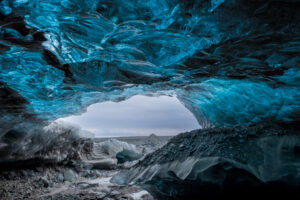 For example, photographing from within this ice cave in Iceland, it was very dark inside and looking out toward the entrance, the daylight was quite bright. I would estimate the dynamic range was at least 12-15 stops of light. That was more than my camera and filters could handle to create a properly exposed image in one frame. So, I relied on exposure bracketing to come away with a shot I’m pleased with. The reason HDR in its truest sense, didn’t last is that the resulting photographs were not realistic images. They looked processed, fake and just “not right”. One of my replies to the attendees about HDR was that we as humans are used to, and comfortable with, seeing shadows in our lives…shadows are essential visual components for us to process the visual world around us as they help us to see depth, definition and weight. We need shadows in our lives! HDR in its extreme eliminated shadows from the photographs, so as a result, they didn’t look realistic to most of us.
For example, photographing from within this ice cave in Iceland, it was very dark inside and looking out toward the entrance, the daylight was quite bright. I would estimate the dynamic range was at least 12-15 stops of light. That was more than my camera and filters could handle to create a properly exposed image in one frame. So, I relied on exposure bracketing to come away with a shot I’m pleased with. The reason HDR in its truest sense, didn’t last is that the resulting photographs were not realistic images. They looked processed, fake and just “not right”. One of my replies to the attendees about HDR was that we as humans are used to, and comfortable with, seeing shadows in our lives…shadows are essential visual components for us to process the visual world around us as they help us to see depth, definition and weight. We need shadows in our lives! HDR in its extreme eliminated shadows from the photographs, so as a result, they didn’t look realistic to most of us.
The other discussion point we had around realistic images was related to sharpness throughout the scene. During one part of my presentation I talked about the concepts of “tack sharp” and “acceptably sharp” in a composition and why I distinguish between the two when choosing the right aperture for my subject and the story I want to tell about it. A question came up about focus stacking and if I use it and what I think about it. Again, my answer was multi-part.
 In certain circumstances, it may be needed to employ some focus stacking, particularly when shooting macro or close-up images and the working depth of field is so small. To render the subject fully in focus throughout the frame, you may need to take several shots at different focus points and then stack them together to have the subject in focus. I will use focus stacking occasionally when I am doing flower photography. The shape of the flower and petals will dictate whether I can get the whole flower sharp in one frame or whether I’ll need to take multiples.
In certain circumstances, it may be needed to employ some focus stacking, particularly when shooting macro or close-up images and the working depth of field is so small. To render the subject fully in focus throughout the frame, you may need to take several shots at different focus points and then stack them together to have the subject in focus. I will use focus stacking occasionally when I am doing flower photography. The shape of the flower and petals will dictate whether I can get the whole flower sharp in one frame or whether I’ll need to take multiples.  As an example the daisy flower on the left presented a relatively “flat” plane for me to focus on and I was able to capture it fully to my liking in one frame. On the other hand, this calla lily required multiple shots to get enough of the flower sharp. The pistl in the center protruded so long, that the distance between it’s tip and the outside edge of the white flower made it so I couldn’t capture it all in one frame, using the aperture and shutter speed I needed. So, I employed focus stacking to capture this image.
As an example the daisy flower on the left presented a relatively “flat” plane for me to focus on and I was able to capture it fully to my liking in one frame. On the other hand, this calla lily required multiple shots to get enough of the flower sharp. The pistl in the center protruded so long, that the distance between it’s tip and the outside edge of the white flower made it so I couldn’t capture it all in one frame, using the aperture and shutter speed I needed. So, I employed focus stacking to capture this image.
The next point I raised about focus stacking and realistic images is where we had the most lively conversation and it revolved around the grand landscapes and more wide angle shots, not macro. I’m not sure if you’ve noticed, but many photographers are using focus stacking on big landscape shots to get tack sharp focus from the immediate foreground all the way to the extreme background. Picture if you will a shot of foreground flowers in an alpine meadow with the scene traveling back many miles to a distant mountain. Many people in their desire to create a “technically perfect” photograph, will strive for tack sharpness on the flowers, through the mid-ground and all the way to the background. They will take 3-10 images at different focal points and blend them together to create a focus stacked image where ever element in the scene is tack sharp, from right under the front of the lens to the distant background. I’m not saying this is bad, or good, that’s for each photographer to decide, so please don’t take my words the wrong way. It is an artistic choice for the photographer and how they want to represent the scene and tell their story. When I see an image that is tack sharp from 2 feet to 10 miles distant, I can recognize instantly that this image has been focus stacked. How? Well, quite simply because the physics of the lenses and apertures will not produce a tack sharp image at those extreme distances. The depth of field is simply not that large. Again, it’s not good or bad, it’s just something I can easily recognize.
Why I bring this up is that we’re talking about the concept of realistic images. Realistic doesn’t mean “documentary” images that eschew processing or enhancement. Nor does it mean every single pixel in the frame is as sharp as technically possible. Realistic to me represents something that my eyes and brain could reasonably “see” in the same scene, a photograph that doesn’t look overly processed and one that is like how our visual system process the information we see. To use the same alpine scene described above, if I am standing in that flower filled meadow admiring the flowers and looking at the distant mountain, my visual system will work to focus everything in that scene as best as it can. Typically for most of us (disregard if you wear glasses or not), the objects that are nearer to us will be sharper than objects that are further away. The flowers at my feet will appear sharper in my vision than the mountain that is 10 miles away.  We are very used to seeing our world in this way and it’s what feels natural and realistic to us. The distant mountains are less sharp primarily because of distortions caused by the small atmospheric particles and the accumulated disruption over a great distance. Have you ever taken a basic photograph and seen a slight “haze” on a distant object? Well, that’s atmospheric disturbance and it affects how well we can see distant objects.
We are very used to seeing our world in this way and it’s what feels natural and realistic to us. The distant mountains are less sharp primarily because of distortions caused by the small atmospheric particles and the accumulated disruption over a great distance. Have you ever taken a basic photograph and seen a slight “haze” on a distant object? Well, that’s atmospheric disturbance and it affects how well we can see distant objects.
This is normal and natural and it is how we humans are used to seeing the world around us. So when it comes to photography, to create realistic images, I am a believer in the idea that distant objects shouldn’t be tack sharp. Having a bit of softness is OK because it is how we normally “see” the world around us. This is where I ascribe the a philosophy of “acceptably sharp” in some photographs to maintain that sense of realism. Acceptably sharp to me means that the element is not blurry, it is indeed sharp, but it is not tack sharp/hyper detailed. In this shot to the left of Mt Hood in Oregon, the mountain itself is not tack sharp, but it is acceptably sharp, meaning it is a tiny little bit soft, which is exactly how the scene looked when I was standing there. This was shot in summer and there was some haze and dust in the atmosphere and that worked to soften my view of the mountain. To me, this adds a bit of “realism” to the photograph, mimicking what the scene looked like in person. It was important to me that the rocks in the foreground were tack sharp so I set my aperture and focal point with a priority on the rocks. By doing that, I knew that my depth of field wouldn’t stretch over the miles to the mountain to render it tack sharp and I was ok with that, even pleased, because in my opinion it adds to the realism.
For another example, here is Tunnel View in Yosemite N.P. 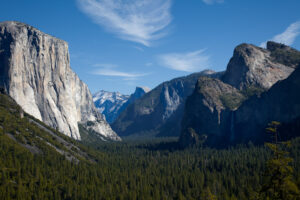 El Cap and the other cliffs in the mid-ground needed to be tack sharp because that was the primary point of interest. However, as the valley stretches in to the background, you can see how Half Dome and surroundings become less sharp and a bit obscured by atmospheric haze over the distance. In my opinion, this is acceptable and even desired as my goal was to create a realistic image.
El Cap and the other cliffs in the mid-ground needed to be tack sharp because that was the primary point of interest. However, as the valley stretches in to the background, you can see how Half Dome and surroundings become less sharp and a bit obscured by atmospheric haze over the distance. In my opinion, this is acceptable and even desired as my goal was to create a realistic image.
The other use of the concept of acceptably sharp is in relation to the different elements in your composition. Of course you want your main subject to be tack sharp. But what about the supporting elements in the shot. Do they have to be tack sharp to support your subject/story, or can they be just acceptably sharp? This choice can affect which aperture you choose and then what shutter speeds might be possible. Making a decision between “tack” and “acceptable” could dramatically affect how you approach the capture of a particular scene.
Camera manufacturers and tech folks love to discuss and demonstrate the technical capabilities of the cameras and lenses to “push photograph” further and further. Perhaps I’m old school, but I would ask “at what cost?” do we push forward. Do we sacrifice the sense of realism for a technical masterpiece? I would argue that we shouldn’t. Part of the reason I prefer landscape photography is that our natural world is an amazingly beautiful place and I want to capture it as best as I can in a moving and compelling way. Part of doing that is creating photographs that I would consider “realistic images” that portray the scene similarly to how we process visual information in the real world. Having shadows and a fall-off of sharpness are real and are things that I want to preserve in my photographs to keep striving to create realistic images.

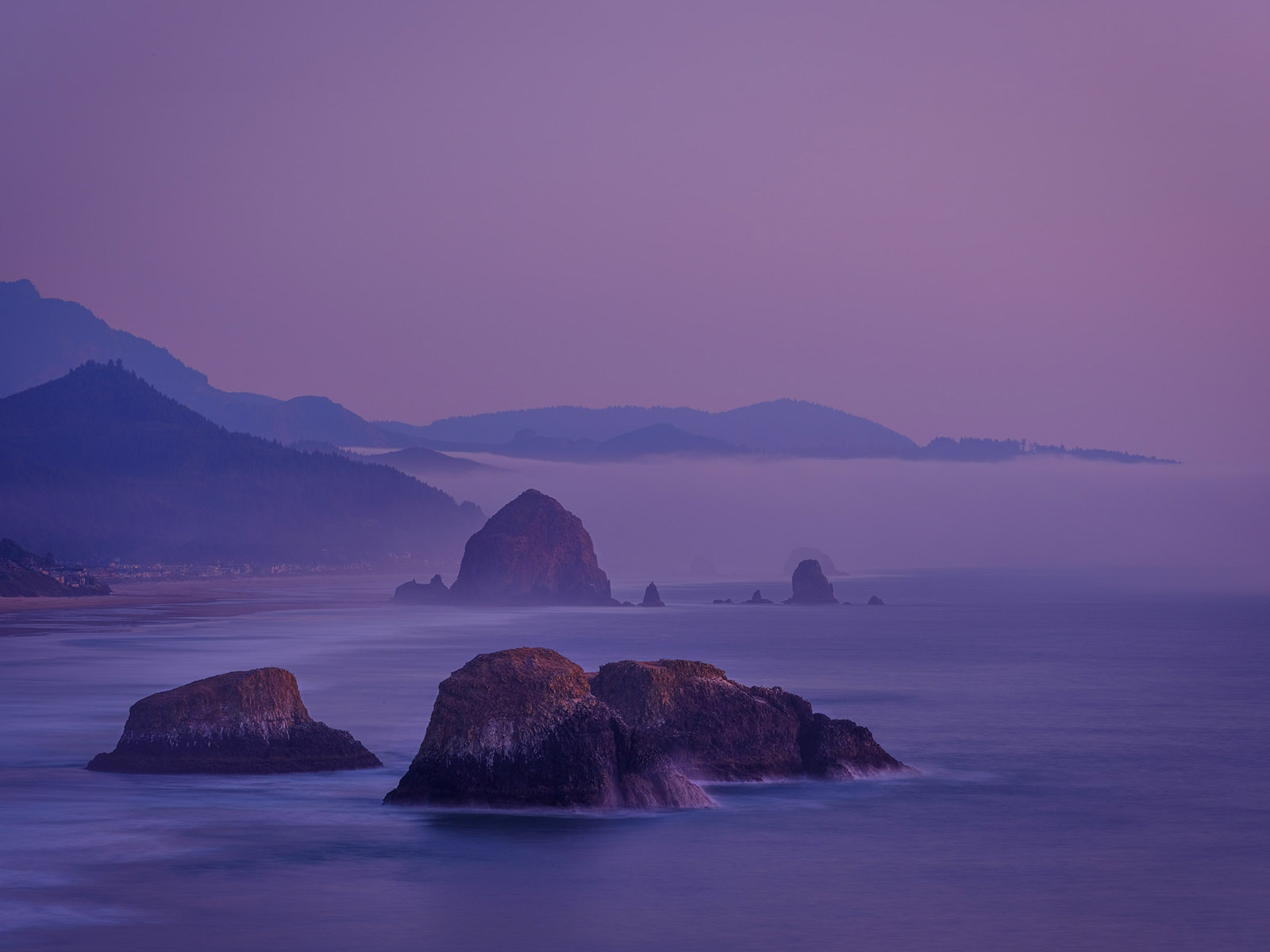
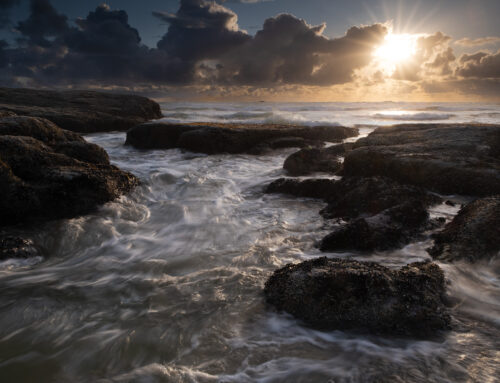
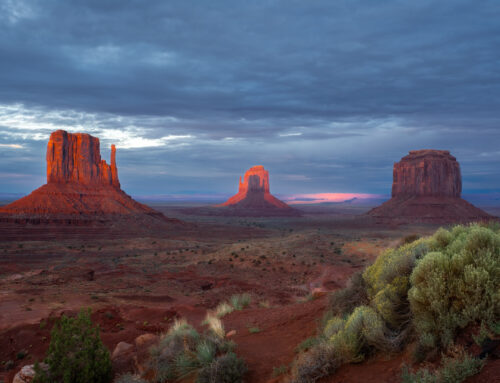
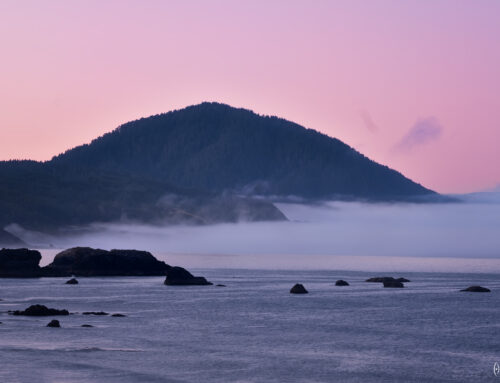
Leave A Comment